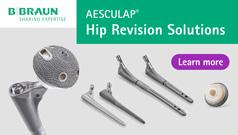Update in Orthopaedics
Back to Basics - New Method for X-Ray Assessment of Statics and Dynamics of Cervical Spine
Vladlen Pustovoytenko - Minsk, Belarus Pavel Volotovski - SICOT Associate Member & SICOT Newsletter Editorial Board Member - Minsk, Belarus |
For many experts, X-ray assessment of statics and biomechanics of cervical spine is important not only to establish a correct diagnosis, but to make a choice between conservative or surgical treatments for spinal trauma and diseases, as well as to control the results of surgical intervention. Both CT and MRI are extremely useful, however, these methods are relatively expensive and sometimes are simply not available for the physician.
The goal of the study was to develop a simple and effective method of X-ray assessment of statics and biomechanics of cervical spine.
Materials and Methods
We analyzed 466 X-ray films of cervical spine in lateral view and developed a new way of assessment of cervical vertebrae in adults (Republic of Belarus Patent No. 213496). The proposed method includes measurement of Axis Angle, which allows to differentiate 5 types of the spinal curvature: hyperlordosis, normal lordosis, mild (smoothed) lordosis, straightened lordosis, and cervical kyphosis [1,2,3]. To build up an Axis Angle, mark three points on the X-ray film (CT scan): 1) point A on the tip of the odontoid process of the second cervical vertebra; 2) point B in the middle of the axis basis; 3) point C on the posterior inferior angle of the C7 body. Then draw two lines of the angle: first line of cervical length between points A and C – AC line and the second axial line of the second cervical vertebra between points A and B – AB line. The connections of these lines in the point A builds ∠BAC Axis Angle. There are ranges of values for each type of curvature: 36-26° – hyperlordosis, 25-19° – normal lordosis, 18-13° – smoothened lordosis, 12-10° – straightened cervical spine, and 9-1°/0°/ minus 1° - minus 12°/ – cervical kyphosis. The median value for hyperlordosis is equal to 28.0°, for normal lordosis – 21.13°, for smoothened lordosis– 15.84°, for straightened lordosis – 11,57°, for cervical kyphosis – 7,77°.
The Axis Angle measurement is presented at the Figure 1 (A-E), where Fig.A demonstrates hyperlordosis ∠BAC = 28°, Fig.B – normal lordosis ∠BAC = 22°, Fig.C – smoothened lordosis ∠BAC = 16°, Fig.D – straightened cervical lordosis ∠BAC = 10°, and Fig.E – cervical kyphosis ∠BAC = 8°.
The decisive sign is the position of AC line (C2-C7) relative to the vertebral bodies: in the spinal canal (Fig.A,B,C), on the anterior wall of the spinal canal (Fig.D), or on the posterior aspects of vertebral bodies (Fig.E).

Figure 1 (A-E). X-ray Skiagram of cervical spine
Results & Discussion
The measurement of Axis Angle has evident advantages over Cobb Angle: we use all the cervical vertebrae, while Cobb method excludes atlas and axis (there are no two vertebral body end plates); in some cases, it is impossible to build Cobb angle, but curvature of cervical spine is visually evident; Axis Angle method always provides clear X-ray landmarks: the tip of the dens, middle of the axis base, posterior inferior angle of the C7 body. CT and MRI help to put points and lines more precisely.
Method of axis angle is simple and easy in interpretation, less difficult, more exact, characterize the whole cervical spine but not separate segments. It is possible to establish the exact X-ray diagnosis, for example, not just hyperlordosis, but hyperlordosis of cervical spine, axis angle=27°. This method has shown great advantages in functional X-ray examination of the cervical spine. It has provided an opportunity to make out 22 variants of cervical position changes: from standard position of the head to maximum flexion / extension and express these changes in degrees [4,5,6]. The physician’s subjective appraisal can be replaced with objective characteristics of statics and biomechanics of cervical spine.
Conclusion
The method of Axis Angle is quick, simple, available, comfortable and practical. This is a universal instrument for assessment of any curvature of the cervical spine both in statics and dynamics in concrete values. It is especially advisable to use for the assessment of surgical treatment results before and after intervention.
- Pustovoytenko V.T. Methodics Technique of curvature measurement of the cervical section of the backbone by lateral spondylogramms //Medical news (Minsk). — 2009. — Na 16. — P. 64-66.
- Beletsky A.V., Pustovoytenko V.T., Makarevich S.V., Mazurenko A.N., Roentgenometry of cervical section of the backbone. — Minsk: prod. Belarus, 2010. — 131 pages.
- Pustovoytenko V.T., Beletsky A.V., etc. A functional roentgenometry research of the cervical section of the backbone with using of axis angle. //Military medicine (Minsk). — 2010. Ns. 2. — Page.104-106.
- Beletsky A.V., Pustovoytenko V.T. Assessment of the effectiveness of operations on the cervical section of the backbone with the help of the method of axis angle / Materials of the 10th Anniversary Russian congress of traumatologists¬orthopeds. Moscow on September 16-19, 2014 — Moscow. 2014. — Page 285.
- Pustovoytenko V., Beletsky A. Modern methods of it,, spondilometry of the V cervical and lumbar sections. Pub. LAP - Lambert Academic Publishing, Saarbrucken, Germany, 2014. — 143 P. (in Russian).
- Patent N2 13496 of Republic of Belarus "Method of diagnostics of th. curvature of the cervical section of the backbone". MPK A 61 B 6/02, priority 23.01.2009. Registered in State register 07.05.2010. Authors Beletsky A.V., Pustovoytenko V.T., Makarevich S.V., Mazurenko A.N.


















